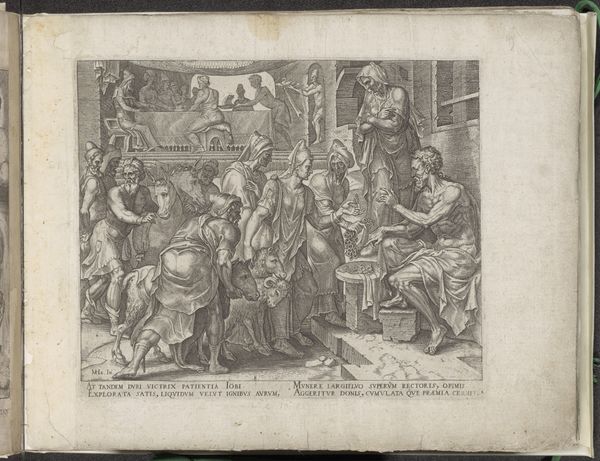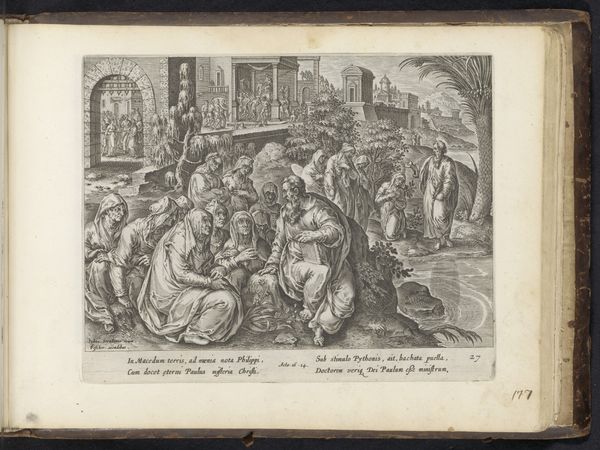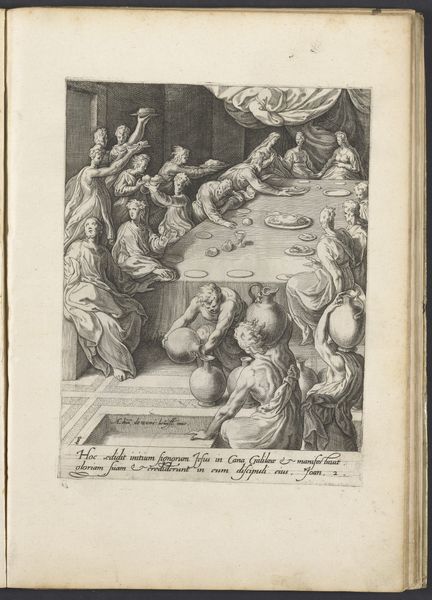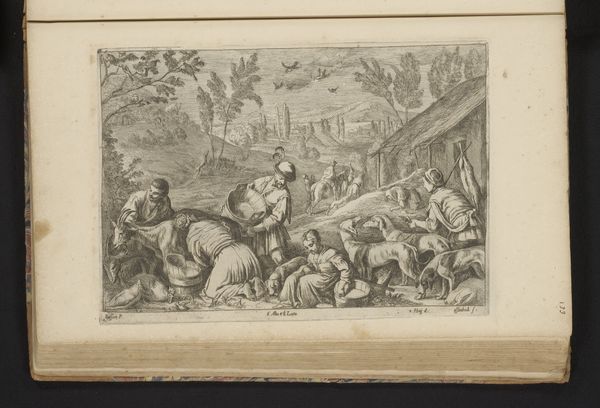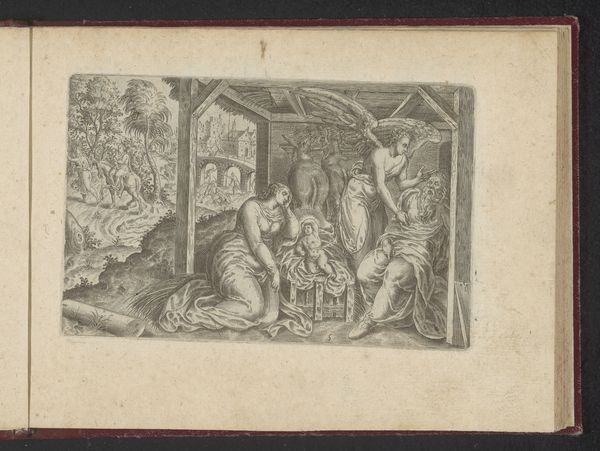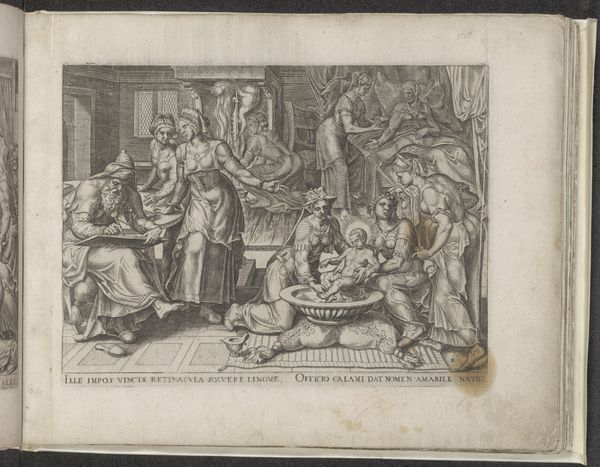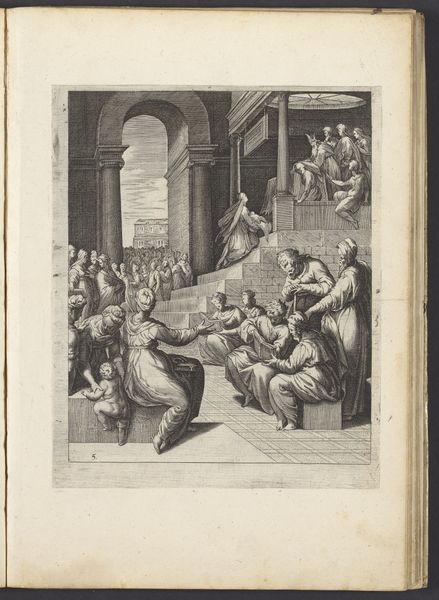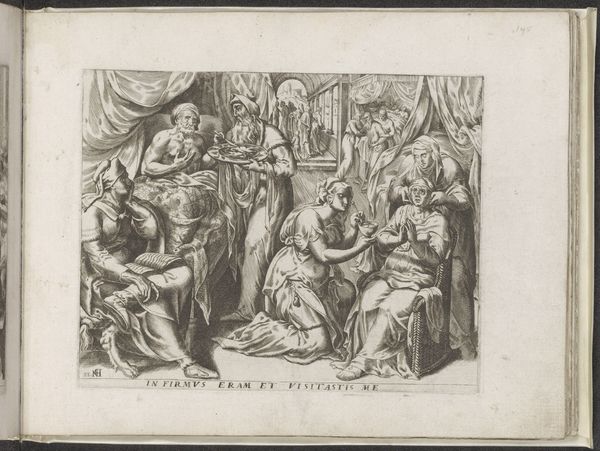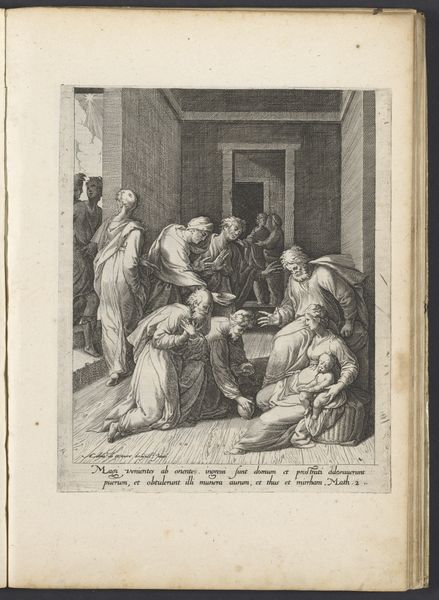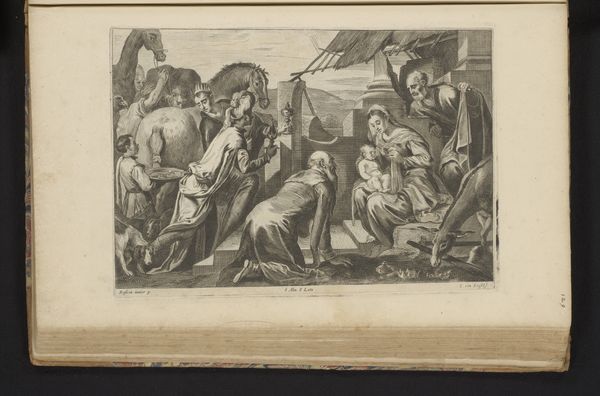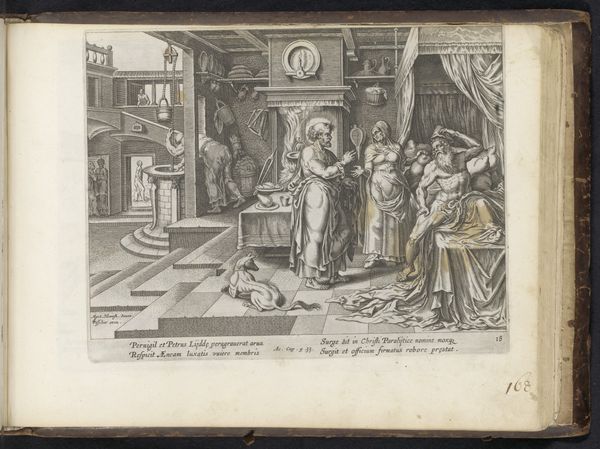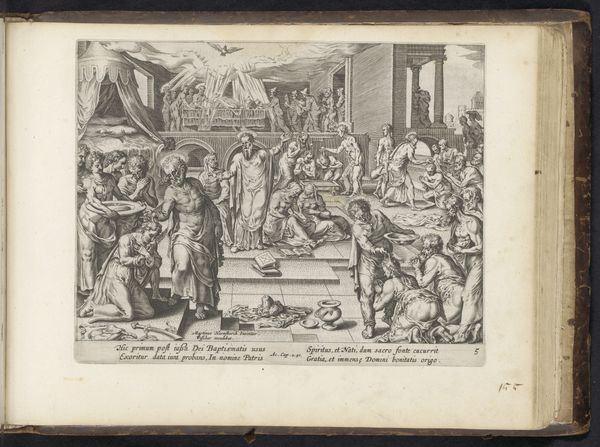
print, etching
# print
#
etching
#
figuration
#
watercolour illustration
#
history-painting
#
italian-renaissance
Dimensions: height 266 mm, width 218 mm
Copyright: Rijks Museum: Open Domain
Curator: Welcome. We are looking at Isaac Duchemin's etching from 1573, titled "Adoration by the Shepherds." Editor: It strikes me as rather intimate for such a momentous event, doesn’t it? There's a real human-scale feeling here, even with those figures swirling in the clouds above. Curator: The choice of print, specifically an etching, is significant. Prints democratized religious imagery during the Renaissance, making them more accessible outside of wealthy patrons. It places the sacred within a more familiar context. Editor: Right. Look at how the artist positions the stable almost like a stage, complete with these classical architectural elements – an archway, steps, these stern columns. Do you read something deliberate there? Curator: Absolutely. Duchemin subtly connects the birth of Christ with the dawn of a new era, building on the themes of the Italian Renaissance—wisdom, classical learning, civic responsibility. That stairway suggests ascension and enlightenment through Christ. The light emanating around those cloud borne figures serves to remind us what the point of it all is. Editor: What about the Shepherds themselves? Are there iconographic traditions here beyond a basic story telling? Curator: Definitely. The shepherds, traditionally, are symbolic of simple faith and humility. Notice how Duchemin differentiates them; some kneel in adoration, one points towards the infant, acting as a visual guide for the viewer. Even the landscape, simplified as it is, directs our eye toward the central figures. Editor: And those swaddled clothes on baby Jesus – isn’t that pretty standard? I think it's often shown to represent the human vulnerability of the divine. Curator: Precisely. It’s a symbol that prepares us for his eventual sacrifice. Furthermore, depictions such as this during the period of Duchemin provided accessible devotional aids and reinforce particular theological perspectives accessible to a large audience during a tumultuous socio-religious period. Editor: It all reinforces a narrative about the nature of power. What strikes you most profoundly now, knowing the piece better? Curator: Its capacity to translate grand, often inaccessible themes into something universally felt. I appreciate how Duchemin connects the specificities of religious reform and renaissance classicism into something emotionally compelling for the contemporary viewer.
Comments
No comments
Be the first to comment and join the conversation on the ultimate creative platform.
